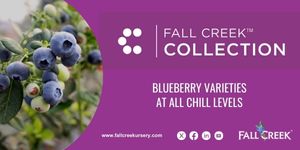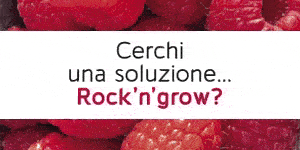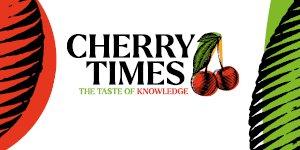Producing a white strawberry was the first challenge for University of Florida/IFAS strawberry breeder Vance Whitaker. The next is to figure out how to market it so that it can be a viable option for Florida producers in the future.
Whitaker saidthere are 12 acres of trial marketed to several US supermarket chains thisyear. They will have a better understanding of the commercial prospects of pineberry after this season.
"There is definitely some interest in trying to make it the fifth reference in the berriescategory. It has a unique look. It has a unique flavour. It doesn't taste like a typical strawberry," Whitaker said. The key is just trying to get someone to try it." First they look at it and say, 'What is it?' If they try it, they usually like it."
THE FUTURE IN CATERING
Pineberry could potentially have a future, especially in the restaurant sector, particularly with high-end restaurants.
"The growers tell me that the chefs they have sent them to so far really appreciate it. It's definitely a unique element to use in food, both from a visual decoration point of view as well as different types of uses," Whitaker added. "I think that's going to be another important aspect, with the benefit of being a sort of foodie audience that looks for new things and maximises the benefits of unusual things."

THE ORIGIN OF THE WHITE STRAWBERRY
The idea of the white strawberry gained most of the notoriety in Japan, where it was very popular. But those varieties were not suitable for Florida agriculture. According to Whitaker, in 2012, strawberry seeds from Japan were sown at the University of Florida and some small plants were recovered. The pollen from the plants was crossed with a Florida variety. The seedlings of this fruit ranged from white to pink to red.
"It tastes sweet, similar to a strawberry, but the aroma is different. The taste is different," Whitaker said. "It's kind of hard to describe, but there's a little bit of a pineapple aroma sometimes when you bite into it. Because of that, people call it pineberry. Pineberry is a name that has been used for some white-fruited strawberries that have existed in small quantities over the years."
TWO NEW VARIETIES DEVELOPED IN JAPAN
According to 'Superfoodly', the main variety produced in Japan is called 'Scent of First Love' (Hatsukoi No Kaori) and was created by Miyoshi Agritech Co. It is not sold in supermarkets, but only in high-end department stores in Japan. There is also the variety 'White Jewel' (Shiroi Houseki) which is about twice the size.
Is the white strawberry genetically modified? No, the plants that produce them were created over a period of almost 20 years using conventional cultivation methods. Miyoshi has not published many details about the selection processes that led to these two white strawberry varieties.
It has been theorised - but not proven - that they have crossed the common red strawberry with the white Alpine strawberry (Fregaria vesca). These are known species of small, cream-coloured berries. The plants only grow about 8 to 10 centimetres tall. Given their small size, it would make sense why it would take many generations of selective breeding over two decades to create the giant, juicy berries that the Japanese are selling.
THE EUROPEAN PINEBERRY FROM BEEKERS
In addition to the one that Miyoshi Agritech created, there is another variety of pineberry with roots in Europe. Selective breeding of the Virginia strawberry (Fragaria virginiana) and a South American species known as Beach and Chilean (Fragaria chiloensis) was used. This cross was made by Beekers Berries, a company based in the Netherlands.
The 'Scent of First Love' and 'White Jewel' are only sold in Japan and the Middle East, but this smaller version of Beekers can be found in many parts of the world, including the United States. It is the most common type and is available in two limited periods; April to June and September to December.
WHAT DOES PINEBERRY TASTE LIKE?
Many people think that these are just unripe green strawberries, but this is not the case. These are yellowish green in colour and have green seeds. An authentic white strawberry variety has red seeds.
Owner Wil Beekers says not 100% of people think it tastes like pineapple "but at least 50%" will say it does. Some describe them as having the sour taste of strawberry-flavoured Jolly Rancher candy.
Apart from the taste, the other reason why these white fruits have been given this name is because their green stem resembles that of a pineapple. When a pineapple is cut in half, it is 100% white inside. It is not something that looks sweet, but it certainly is.
Beekers has registered the name Natural Albino® to sell them and it is true - these white strawberries are not GMO. In fact, they may have been around for centuries.
REVERSE GENETICS
Beeker's in-house breeding expert Hans de Jong believes he has recreated an original South American variety. Centuries ago, the South American strawberry produced some white fruits with albino mutations.
The species we now consider the normal strawberry (Fragaria x ananassa) is actually a cross between the South American strawberry (Fragaria chiloensis) and the North American Virginia strawberry (Fragaria virginiana). During the 1800s, during transit to Europe or shortly thereafter, these two varieties crossed spontaneously to create the juicy red variety that we commonly buy today.

What Hans de Jong has done is to botanically 'reverse' the history of the white strawberry, taking it back to its origins some 200 years ago. He brought back the spontaneous crossbreeding that was almost lost. At least, that is what all his research indicated.
The first seed he used was really old and produced a white berry. It was obtained from a traditional French seed collector, but when it grew the plant was 'small and sickly'. It took some time for him to select it to become the healthy plant that is sold today under the name Natural Albino.
You will never see a whole field of these pale coloured fruits. Because Natural Albino plants are all female, they do not self-pollinate . They always require cross-pollination with their red counterparts. This means that every other row of the plant must be a normal variety.
An even newer addition to the market is Hula Berry®. This is a trademarked name that the California-based Pacific Plug & Liner Co. uses to sell its plants.
It is not clear where they come from. They look identical to Beeker's version and may actually be the same thing, but sold under a different name to family gardeners in the US.
WHAT FUTURE?
Thereasons for the slow development of the white strawberry 'pineberry' lie in the low productivity of the current cultivars. The low yields require high selling prices that find a limited market. Online services offering pineberry plants (e.g. Bakker) have removed this fruit from their assortment.
Research is exploring improved solutions to meet the demands of markets most interested in novelties, such as the niche markets of chefs and speciality shops.
Source: VSCNews - Superfoodly - Tokyocheapo















